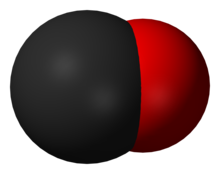This is an old revision of this page, as edited by Daniel Case (talk | contribs) at 17:59, 3 May 2013 (→Creation: wording). The present address (URL) is a permanent link to this revision, which may differ significantly from the current revision.
Revision as of 17:59, 3 May 2013 by Daniel Case (talk | contribs) (→Creation: wording)(diff) ← Previous revision | Latest revision (diff) | Newer revision → (diff) 2013 film| A Boy and His Atom | |
|---|---|
| File:A Boy and His Atom (still).jpg | |
| Distributed by | IBM Research |
| Release date |
|
| Running time | 1 minute |
| Language | English |
A Boy and His Atom is a 2013 stop-motion animated short film released on YouTube by IBM Research. It depicts a boy playing with an atom that takes various forms. One minute in length, it was made by moving carbon monoxide molecules viewed through a scanning tunneling microscope, magnifying them 100 million times. The molecules were manipulated to create images, which were then saved as individual frames to animate them.
It has been recognized by the Guinness Book of World Records as the smallest movie ever created. The scientists at IBM's Almaden Research Center who created the film had been developing ways to improve data storage efficiency by magnetizing smaller groups of molecules than has previously been accomplished. They made the film in the hope that schoolchildren who see it will become aware of the possibilities of careers in science.
Synopsis
At the beginning, subtitles explain how and why the film was made. A boy is confronted by a single, circular atom. Hesitant at first, he dances for it to the film's musical accompaniment, then bounces it around like a ball. The atom drops to the ground, and forms a trampoline which he bounces on. After he gets off, it resumes its original form and rises into the sky, where it becomes a cloud, and then the word "Think", a longtime internal IBM motto.
Creation

A Boy and His Atom was created by a team of IBM scientists using a scanning tunneling microscope. Carbon monoxide molecules were manipulated into place on a copper substrate with a copper needle at a distance of 1 nanometer. They remain in place, forming a bond with the substrate because of the extremely low temperature of 5 K (−268.15 °C, −450.67 °F) at which the device operates. The oxygen component of each molecule shows up as a dot when photographed by the scanning tunneling microscope, allowing the creation of images composed of many such dots.
The team created 242 still images using stop-motion techniques and 65 carbon monoxide molecules. The images were combined to make a minute-long film. Each frame measures 45 by 25 nanometers. It took four researchers two weeks of 18-hour days to produce the film.
The graphics and sound effects resemble those of early video games. "This movie is a fun way to share the atomic-scale world," said project leader Andreas Heinrich. "The reason we made this was not to convey a scientific message directly, but to engage with students, to prompt them to ask questions." In addition, the researchers created three still images to promote Star Trek Into Darkness—the Federation logo, the starship Enterprise, and a Vulcan salute.
While the film was merely a fun diversion for the researchers, it grew out of work that could increase the amount of data computers could store. In 2012 they had demonstrated that they could store a bit of computer memory on a group of just 12 atoms instead of a thousand, the previous minimum. "Today you can store two movies on your iPhone," Heinrich said, in a companion video about the film's production. "Imagine being able to store every movie ever made."
Reaction
Guinness World Records certified the creation as "Smallest Stop-Motion Film" ever made.
References
- ^ Jason Mick (May 1, 2013). "IBM Makes World's Smallest Movie Using Deadly Carbon Monoxide". Daily Tech. Retrieved May 1, 2013.
- ^ "IBM makes movie about a little boy _ a very little boy _ by pushing molecules around". Washington Post. Associated Press. May 1, 2013. Retrieved May 1, 2013.
- ^ Jason Palmer (May 1, 2013). "Atoms star in world's smallest movie". BBC. Retrieved May 1, 2013.
External links
- A Boy and His Atom at YouTube
- IBM's article on the movie